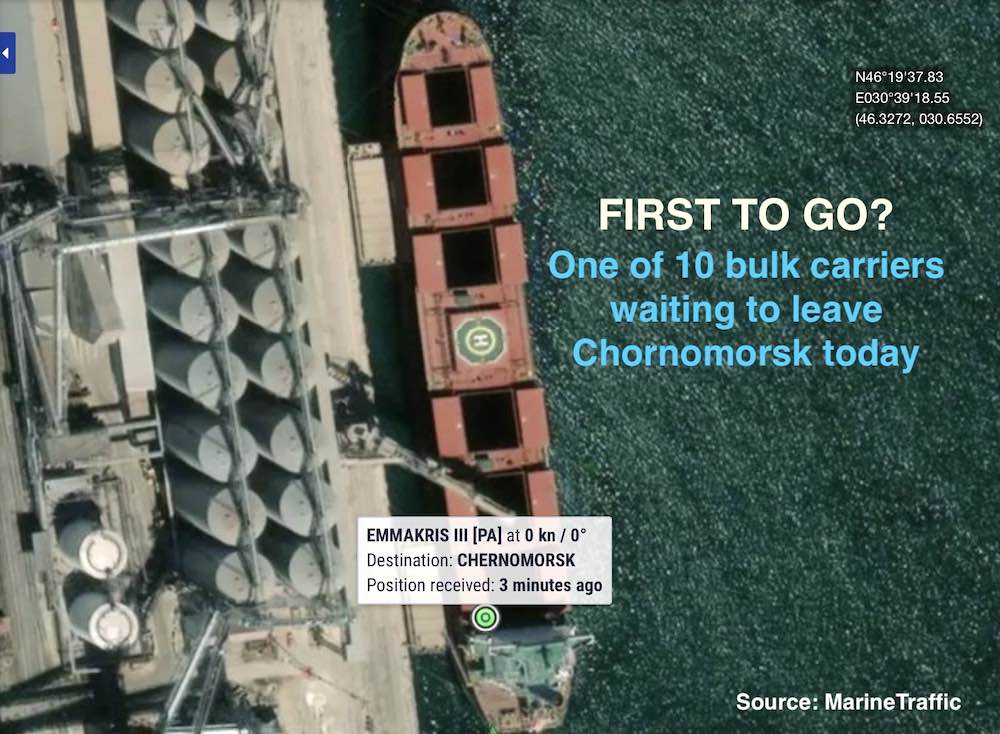All eyes on Chornomorsk for signs of grain movement out of the Black Sea

Those involved in the global transport of grain are watching the port of Chornomorsk, southwest of Odesa, closely today, looking for signs of shipments resuming across the Black Sea.
The port is located on the northwestern shore of the Black Sea at the Sukhyi estuary, some 30 km from Odesa. It is the fourth largest port in the country, capable of handling ships up to 239 m in length with a maximum draught of 13.1 m.
All Ukrainian sea ports have been closed since Russia invaded on February 24, however preparations are now underway to get last year’s harvest moving following a deal signed in Istanbul last Friday between Russia and Ukraine to establish a safe corridor to the Bosporus.
“We believe that over the next 24 hours we will be ready to work to resume exports from our ports. We are talking about the port of Chornomorsk. It will be the first, then there will be Odesa, then the port of Pivdeny,” deputy infrastructure minister Yuriy Vaskov told a news conference on Monday, saying that a first shipment could be made this week.
“In the next two weeks, we will be technically ready to carry out grain exports from all Ukrainian ports,” Vaskov said.
The United Nations (UN) is heavily involved in the operation to move the much needed grain out of the war-torn country.
The first ships may move from the country’s Black Sea ports within a few days, said deputy UN spokesperson Farhan Haq. Details of the procedures will soon be published by a joint coordination centre in Istanbul that is liaising with the shipping industry, said Haq.
Data from shipping analytics platform Sea/ shows there are currently 10 bulk carriers marooned at the port of Chornomorsk including the Emmakris III (pictured via satellite today below) with no indications that any other ships are making their way there at the moment.
At issue remains the safety of the region, strewn with mines, and insurers’ willingness to cover ships making voyages in the high risk Black Sea. Confirmed mine clearances and trial voyages are deemed as necessary before insurers take on the risk.
Crewing issues to move out ships that have been trapped at these ports could be resolved soon. There are some 85 foreign cargo vessels sitting at Ukrainian ports, mainly abandoned with crew repatriated. To resolve the manpower shortage, Ukrainian politicians are expected to allow local seafarers to return to working on ships, having previously been forced to sign up for military service in the ongoing six-month conflict.
“While there remain some concerns around implementation, and there are a range of scenarios around how quickly exports may ramp-up, the deal [signed between Ukraine and Russia last Friday] should facilitate some increase in shipments from Ukraine, helping to free up storage space (already largely full with last year’s crops) ahead of this year’s wheat and corn harvests which are due in the coming months,” Clarksons noted in its most recent weekly report.

